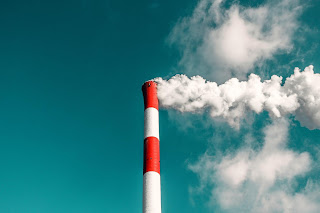Innovative Ideas for Air Pollution Prevention
Welcome to Samprabha, an initiative for spreading positivity.
As the winter season approaches, the problem of pollution also tends to reach its peak. The main reason for this is the simple law of dynamics which is that particles flow at a higher rate in the high temperature whereas at a lower temperature, particles freeze near the source. When we talk about the urban and industrial areas, then it becomes the issue of major concern. Carbon footprints created from vehicular and industrial emissions pollute the nearby air to a large extent. This makes it difficult to breathe.
So, today we are going to discuss how the recently emerged innovative ideas can help in the prevention and control of pollution. But, before that, we need to identify some major sources of air pollution. We will suggest innovations based on the proper management and resolution of these sources.
Sources of Air Pollution
According to Volkova and Varahbhatla [1], the major sources of pollution are:
- Vehicular Emissions
- Industrial Emissions
- Domestic Processes
Prevention and Control of Air Pollution
To control vehicular emissions and industrial processes various technological advancements like Catalytic Converters, Particulate Filters, Sensor Technologies for sensing temperature and chemicals for respective processes, Engine/Fuel Management, Enhanced Combustion System etc. have been introduced.
The basic approach here is to manage the emissions through a certain mechanism. The mechanism and its efficiency are subject to improvement over time. The aforementioned concepts are not very new to the scientific community but the developmental progress is thought of little technical discussion which has not been extensively touched in this article.
Let us discuss them one by one.
- Catalytic converters are intended to convert the emitted particles or gases into a lesser intense pollutant through catalytic reactions. These converters are designed cautiously so that not only it does the function which it is intended to, but also, process their mechanism safely and securely.
- The major extent of air pollution especially in urban areas is due to the particulate matter emitted from vehicles and industrial processes. Now, the idea of particulate filters is to deposit the particles at the source and not let them pollute our beloved nature.
- Sensor Technologies are intended to do several functionings for the proper operations of the major emission control system. So, we can say that these technologies are mainly subsidiary to the major control systems. These include sensing mechanisms for the measurement of internal temperature and the measurement of the levels of oxygen and the oxides of nitrogen etc.
- Engine/Fuel management strategies are aimed at maintaining near to zero-emission from the pollution causing systems. These involve various technological inputs like Variable Valve Timing (VVT), Exhaustive Gas Recirculation (EGR) etc. depending upon the system design and congruent requirements.
- Incomplete combustion of the fuels used also cause air to pollute to a large extent. So, enhanced combustion can also help prevent the hazardous compound to go directly into the air.
- Evaporative emissions controls are also essential for the purpose of the prevention of the hazardous compound formation at ground-level. Volatile Organic Compounds when reacting with the oxides of nitrogen form ground-level ozone which is harmful to plants, our respiratory system and eyes.
- Use of artificial photosynthesis technology can be revolutionary for air pollution control.
References
- Volkova, V., & Varahbhatla, V. (2017). THE PROBLEM OF AIR POLLUTION IN INDIA. 1 SCIENCE AND LIFE: Proceedings of articles the international scientific conference. Czech Republic, Karlovy Vary - Ukraine, Kyiv, 22 December 2017 [Electronic resource] / Editors prof. I.P.Klimov, I.V.Ignatko, V.B.Mantusov. – Electron. txt. d.. – Czech Republic, Karlovy Vary: Skleněný Můstek. – ISBN 978-80-7534-079-5.
- MECA
Thanks and Keep Visiting.
Author
Lovish Raheja
To stay connected with us, kindly follow and subscribe to our social media handles:


👍
ReplyDelete👍
ReplyDelete🇮🇳🇮🇳 great work Lovish Ji 🇮🇳🇮🇳
ReplyDelete